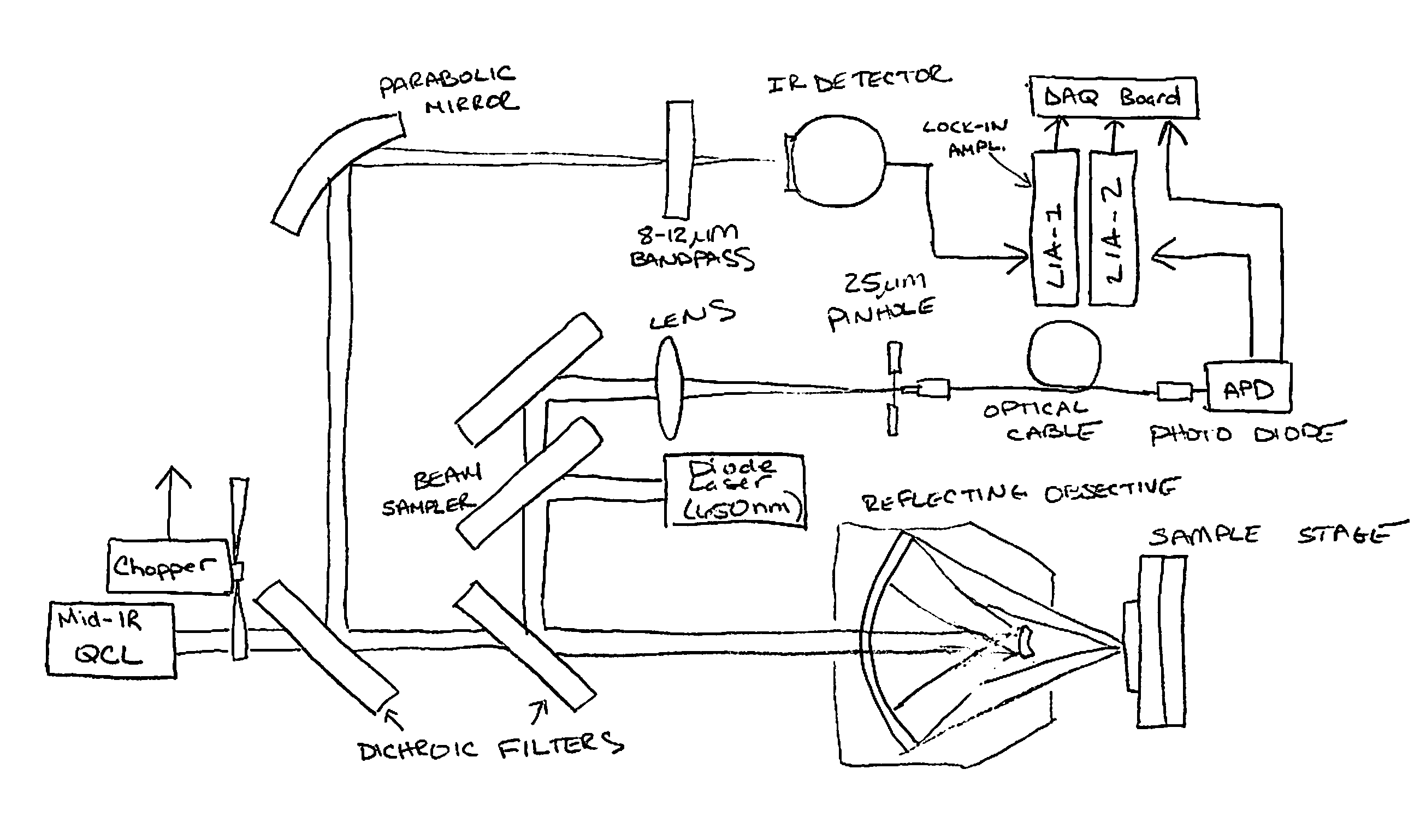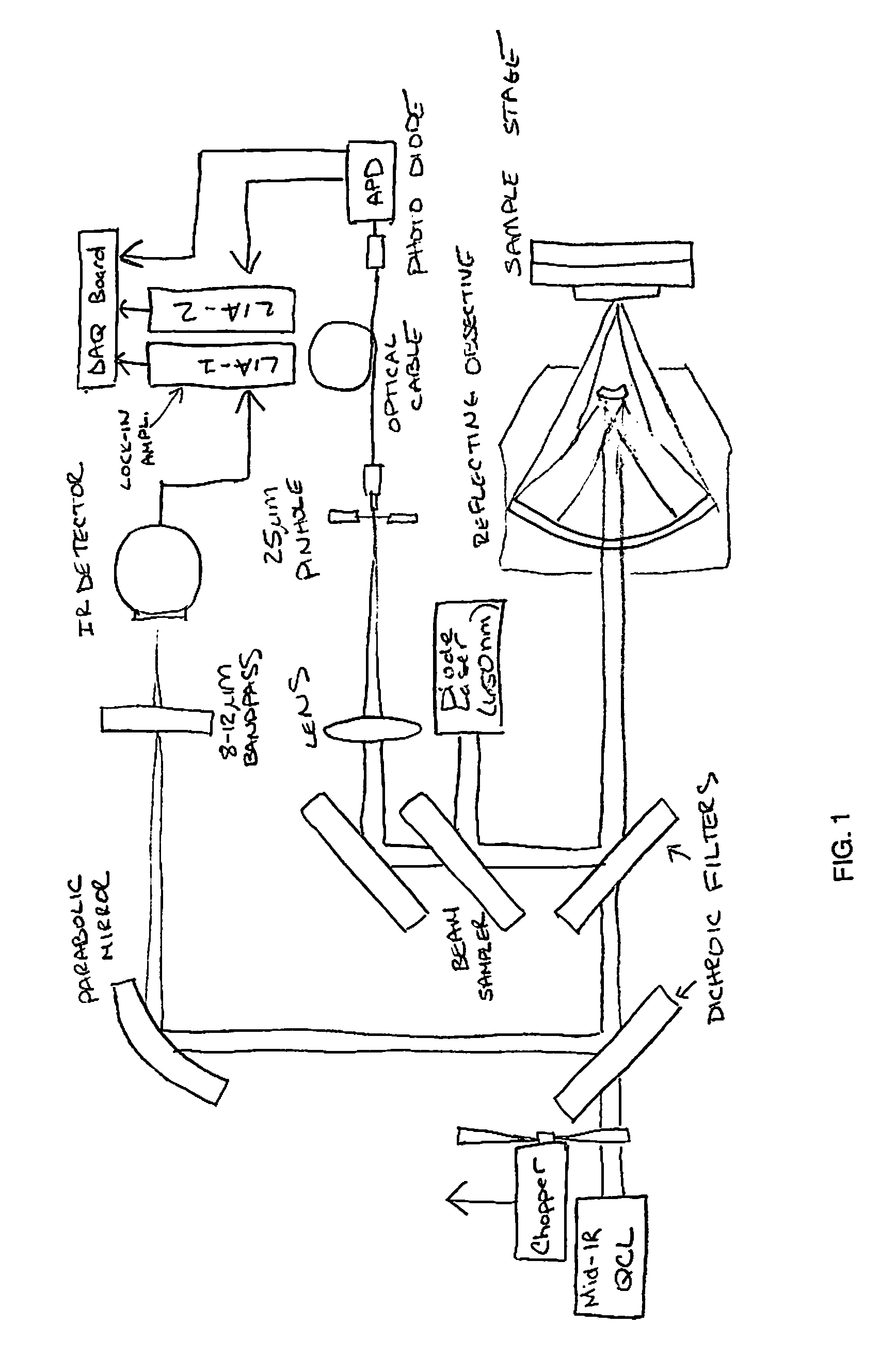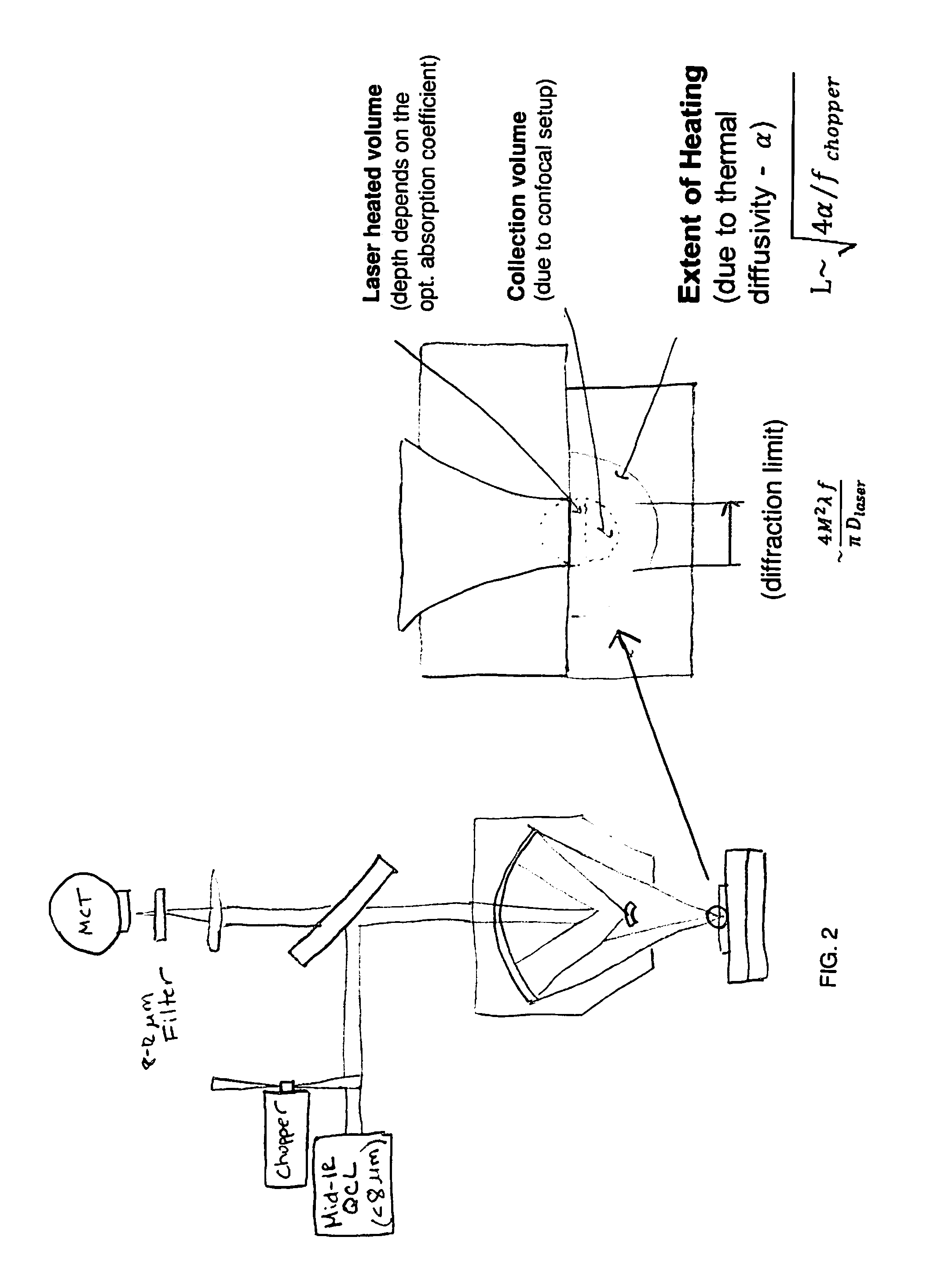Chemical mapping using thermal microscopy at the micro and nano scales
a thermal microscopy and micro-nanometer technology, applied in the field of micro- and nano-scale photothermal chemical imaging, can solve the problems of not being very useful for organic compound identification, limited practical resolution limit to about 20 m, and not always well suited to the length scale involved in microfabricated devices, etc., to reduce the size of the heated spot, and reduce the cost of operation
- Summary
- Abstract
- Description
- Claims
- Application Information
AI Technical Summary
Benefits of technology
Problems solved by technology
Method used
Image
Examples
Embodiment Construction
[0030]One embodiment of the present invention uses a three-in-one instrument comprising a diffraction-limited PT microscope with an IR light detector, a sub-diffraction-limited PT microscope with visible light detector, and a standard confocal microscope (see FIG. 1). A sample undergoes photo-thermal heating using an IR laser and the resulting increase in thermal emissions is measured with either the IR detector or a laser probe having a visible laser reflected from the sample. The visible laser probe (operated in continuous wave (cw) mode) is co-focused with the IR beam at the sample. As the sample is periodically heated, the sample expands and contracts, with its surface moving up and down which modulates the reflected visible laser. The index of the refraction of the sample also changes and this is also registered as a change in reflectance. This modulation is demodulated by employing a lock-in detector.
Photo-Thermal Confocal Microscope
[0031]FIG. 1 shows the schematic drawing of ...
PUM
| Property | Measurement | Unit |
|---|---|---|
| wavelength range | aaaaa | aaaaa |
| wavelengths | aaaaa | aaaaa |
| wavelengths | aaaaa | aaaaa |
Abstract
Description
Claims
Application Information
 Login to View More
Login to View More - R&D
- Intellectual Property
- Life Sciences
- Materials
- Tech Scout
- Unparalleled Data Quality
- Higher Quality Content
- 60% Fewer Hallucinations
Browse by: Latest US Patents, China's latest patents, Technical Efficacy Thesaurus, Application Domain, Technology Topic, Popular Technical Reports.
© 2025 PatSnap. All rights reserved.Legal|Privacy policy|Modern Slavery Act Transparency Statement|Sitemap|About US| Contact US: help@patsnap.com



